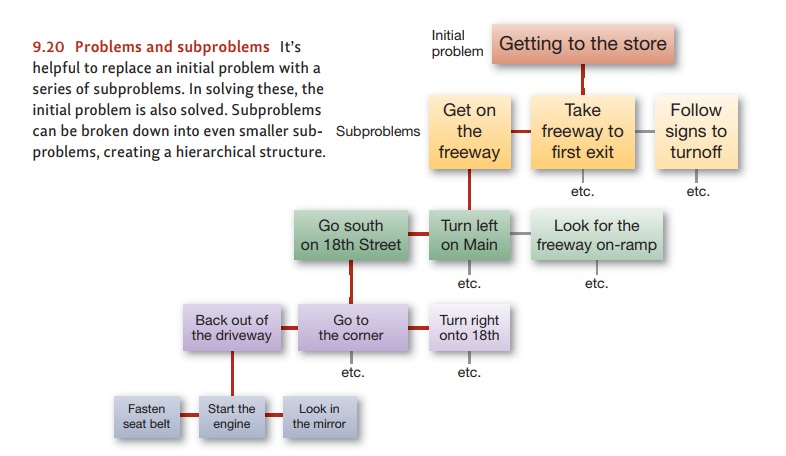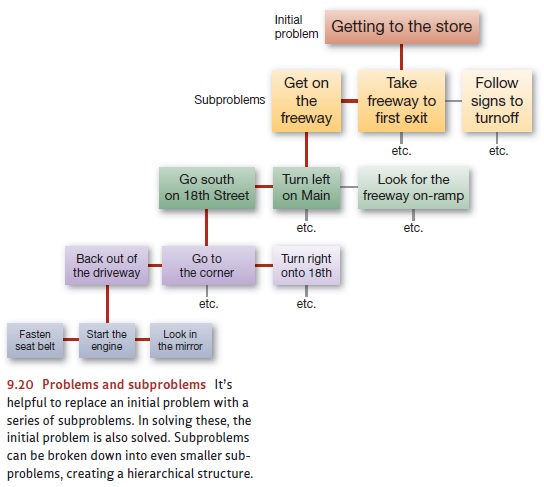Chapter: Psychology: Thinking
Problem Solving: Hierarchical Organization

Hierarchical
Organization
Problem solving is also guided by
your broader understanding of the problem and its context. To see this,
consider an often effective problem-solving strategy called means-end analysis. In using this
strategy, one asks, “What is the difference betweenmy current state and my
goal?” Then, with that difference defined, one asks, “What means do I have
available for reducing this difference?” Thus, for example: “I want to get to
the store. What’s the difference between my current state and my goal? One of
distance. How can I reduce the distance? My car. My car won’t work. What’s
needed to make it work? A new battery. Where do I get a battery?” And so on
(after Newell & Simon, 1972).
A means-end analysis can replace
the initial problem (e.g., getting to the store) with a series of subproblems
(e.g., getting the car to work, obtaining a new battery); in that way, the
initial goal is replaced by a series of subgoals. If this process is repeated
(so subproblems are broken down into still smaller subproblems), it can create
a hierarchi-cal structure like the one shown in Figure 9.20.
Understanding a problem in terms
of this sort of structure has several advantages. First, the subproblems are by
definition less complex than the initial problem, so they’re likely to be
easier to solve than the original problem. Second, the subproblems are often
quite straightforward. For example, a driver seeking to reach the store might
realize that her best path is the freeway, so the larger problem (“get to the
store”) can be replaced with a simpler and more familiar routine (“get on the
freeway”). This rou-tine in turn is composed of still simpler subroutines—specific procedures for
solving often-encountered, well-defined problems. Subroutines required for
taking the free-way, for example, might include “go south on 18th Street,”
“accelerate when the light turns green,” and so on. In this way, a series of
modular units can be assembled into the larger-scale solution to the initial
problem.

Related Topics